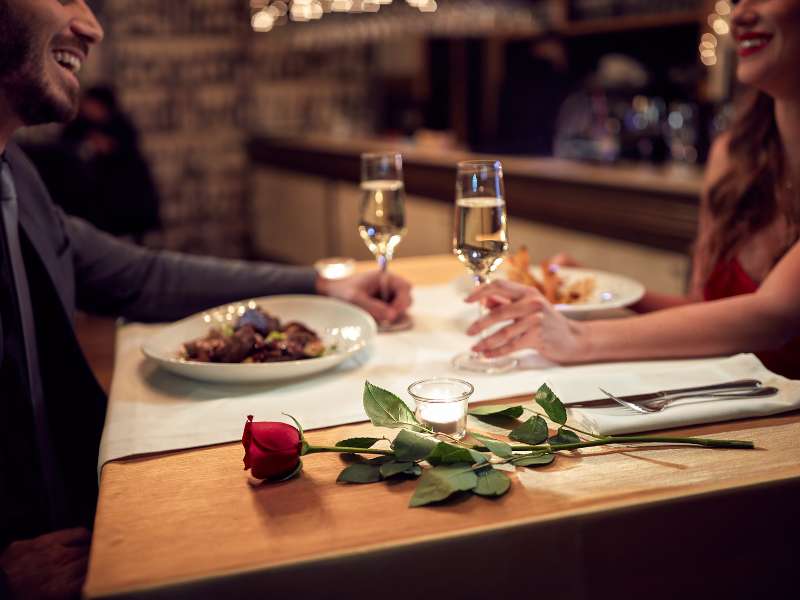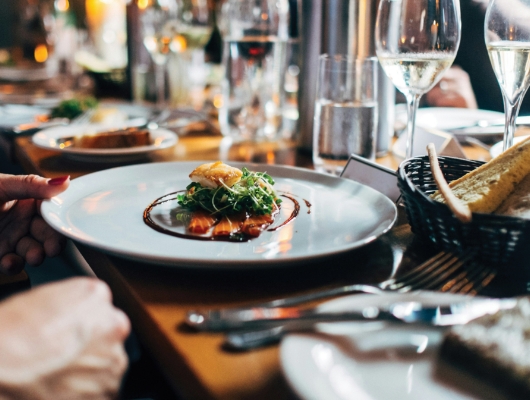Taking Reservations
Having a clear, straightforward reservation policy is crucial to creating a smooth night of service. There’s more to taking reservations than just penciling in when a party would like to come for dinner. A smart reservation policy starts with knowing your capacity: How many seats and how many tables does your restaurant have, and what is the approximate dining time for each table? Identifying this will help you determine how many reservations to take per hour and how far apart to space them.
Next, pay attention to how many FOH staff you have scheduled. Is it enough to accommodate the numbers you have on the books, plus walk-ins? Make sure staff are aware of what the numbers look like for service and if the reservations have any special needs or requests to make service smoother in the moment. Managers should be going over the reservation book prior to each night’s service with an eye toward making the guest experience exceptional.
It’s also important to remind guests of their reservation the day of or day prior. You can do this with a phone call or text, and many online reservation systems send automatic reminders on your behalf. Some restaurants choose to mitigate the risk of losing revenue due to no-shows by taking credit card information upfront and charging a fee for guests who no-call, no-show. That’s a choice that each restaurateur must make personally; if it’s your restaurant’s policy, make sure it’s clearly communicated to guests. Determine in advance how long you will wait on a party to arrive before giving up the table and train your host staff accordingly.
Remember, the reservation process is often one of the first ways guests interact with your restaurant, and it’s important to give a good first impression.
Wait Times
You’re slammed on a Friday night at 6:00, and you see a line start to form at the hostess station. It’s a good problem to have, of course, but it represents a challenge nonetheless. Guests come to restaurants hungry, ready to be whisked off their feet and served immediately. But often, this is impossible due to peak hours and diners who just won’t give up their tables no matter what.
It’s important to train your host staff in the fine art of hospitality. These are the first faces your guests see when they enter your restaurant, and they should be warm and inviting, ready to hold a door open or help a guest with his or her jacket.
One great way to accommodate crowds is by offering waiting guests a spot at the bar. Train your staff to note arrival times so that they can monitor how long guests have been waiting. Identify a time period in which you hope to have guests seated and try to work toward that goal. If your host staff can see that a party has been waiting too long, empower them to offer something to the guests to keep them happy. On a recent visit to a busy burger spot, my husband and I sat hungrily watching the other customers enjoying their burgers. We kept watching our server come out of the kitchen without our order, as we slipped closer and closer to Hangry territory. Then something unexpected happened. Our server put down an appetizer of house-made chips and dip. “The kitchen is experiencing some back-ups right now, so we wanted to share these with you while you wait.” It was just what we needed to save the experience from nose-diving, and we gratefully munched on the chips until our burgers arrived. We loved the house-made French onion dip so much that, on return visits, we started with chips and dip. Troubleshoot common service issues
If you can identify a low-cost menu item that servers and hosts may use in this way, you’ll turn a table around from disappointed to pleased very quickly. Likewise, for places with long lines, consider sending staff throughout the line with little tastes. A local barbecue spot does this with their burnt ends, and it’s just enough to keep guests wanting more and feeling good. At the same time their servers are giving out burnt ends, they’re also taking drink orders they can run back to the bar. They’re giving a salty, savory bite to guests and then asking if they’d like to order a drink, and it works every time, driving bar sales and increasing the happy factor!
The biggest piece of the wait time puzzle is clear communication. Train hosts to be able to estimate table times based on observed data. It’s better to tell guests that their table will be ready in 15 minutes and have it for them in 10 than the other way around.
Restaurant pagers can also be a useful tool to allow guests to wander from the host stand without fear of missing their name being called, but these are an investment and they require upkeep. A more modern approach is to use a mobile buzzer, which uses the guest’s cell phone number and sends an alert directly to their phone when a table is available. This has an added benefit of enhancing guests experiences with the opportunity for loyalty rewards and other incentives, delivered right to the thing they use most—their cell phones. Additionally, it can provide useful analytics that will help you as the business understand your restaurants service flow, depending on what program you use.
Check-Splitting
In researching for this article, what I found most often were articles advising consumers on how to split their own checks and how to navigate the often awkward experience of determining who pays what when the check arrives at the table. The overwhelming takeaway from these articles was this: splitting checks is a pain point among diners, especially in big groups.
So, what does that mean for restaurants? Creating a straightforward check-splitting policy can go a long way in alleviating stress for your customers, and it can make your restaurant a destination for large groups. Yes, for most servers, check splitting can have a hassle factor. Maybe two out of five guests split an appetizer. Whose check does that go on? Maybe, as the meal progressed, and guests wanted to socialize, there was some seat switching and now it’s hard to say who had what.
Regardless of the burden it presents to staff, it’s better to absorb the headache on the restaurant’s end rather than to pass it along to guests, and restaurants who simply refuse to split checks are the object of internet-wide ire and flaming Yelp reviews.
So, yes, allow your guests to split checks, but train your staff on the best way to itemize and split tickets on your point of sale system, and run through various scenarios in your training session to prepare staff for what they might encounter on the floor. In the training process, or better yet, in your server script, direct your servers to ask large parties if they plan to split the check when they take the order. That will allow your server to input the order in a way that will make splitting easier at the end of the meal. After a great meal and a couple bottles of wine, your guests will appreciate not having to whip out their calculators or attempt higher math in their heads, and they’ll remember the convenience when booking their next night out.



